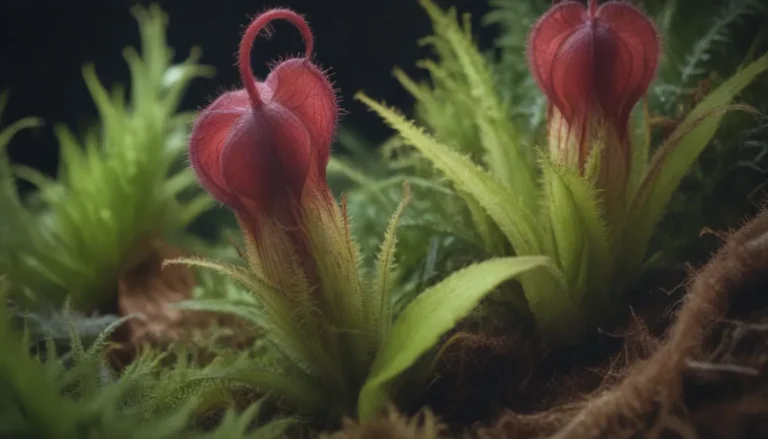The Ultimate Guide to Growing and Caring for Easter Lilies

Welcome to the ultimate guide on how to grow and care for Easter lilies! In this comprehensive article, we will delve into everything you need to know about nurturing these beautiful trumpet-shaped flowers that symbolize spring and are a classic Easter decoration. From planting tips to pruning techniques, we have got you covered.
Understanding Easter Lilies
Easter lilies, scientifically known as Lilium longiflorum, are perennial bulbs that produce large, fragrant white or pink flowers. The plant’s rigid stem and dark green leaves create a striking appearance in any garden. While traditionally blooming in the summer, some varieties have been cultivated to flower earlier to coincide with the Easter holiday. It’s essential to note that Easter lilies are toxic to cats, so take precautions if you have feline friends at home.
Easter Lily Scent
One of the most remarkable features of Easter lilies is their strong, sweet scent that can fill an entire room or garden. The fragrance adds an extra level of appeal to these beautiful flowers.
Easter Lily Care Tips
Taking care of Easter lilies requires attention to detail and proper maintenance. Here are some essential care requirements for these stunning plants:
Light
Easter lilies thrive in full sun to partial shade but need protection from the strong afternoon sun to prevent foliage scorching. Position your lilies so that the top receives full sun while the lower parts remain shaded to keep the roots cool. Using a layer of mulch or planting shorter plants around the lily bed can also help maintain optimal growing conditions.
Soil
Easter lilies prefer well-drained soil rich in organic matter. While they thrive in slightly acidic to neutral soil pH, they can tolerate slight alkalinity. Good drainage is key to ensuring the plant’s health and growth.
Water
Keep your Easter lilies in evenly moist soil by watering them whenever the top inch dries out. Avoid overwatering to prevent water-logging, which can lead to root rot. Watering in the morning allows the foliage to dry in the sun, reducing the risk of mildew.
Temperature and Humidity
Easter lilies prefer mild temperatures between 60 and 70 degrees Fahrenheit and a relative humidity level of 30 to 50 percent. Avoid exposing them to hot and humid conditions, as they may not grow or flower well in such environments.
Fertilizer
Use a slow-release, balanced fertilizer in the spring when new growth appears. Organic fish fertilizer mixed with water provides essential nutrients for lilies. A layer of mulch on top of the soil helps retain moisture and keeps the plant happy.
Types of Easter Lily Varieties
While the traditional Easter lily produces large white flowers, there are other varieties with different bloom colors. Some popular Easter lily types include:
- **L. longiflorum ‘White Heaven’
- **L. longiflorum ‘Nellie White’
- **L. longiflorum ‘Deliana’
- **L. longiflorum ‘Elegant Lady’
- **L. longiflorum ‘Trimphator’
Pruning Techniques for Easter Lilies
Pruning Easter lilies midseason involves deadheading blooms and cutting back brown foliage. To maintain the plant’s energy for flower production, clip off flower stalks at their base. Removing mostly brown leaves but leaving yellow ones will promote plant health.
Propagating Easter Lilies
Easter lilies are propagated from bulbs planted in the spring. After a few seasons of growth, you can dig up the bulbs, separate the bulblets, and replant them in different parts of your garden.
How to Extend the Life of Your Easter Lily Beyond Easter
If you wish to keep your Easter lilies blooming beyond the holiday season, proper care and maintenance are crucial. Whether you choose to plant them in your garden or keep them indoors, following these guidelines will help the plant thrive:
- **Keep the soil moist but well-drained
- **Cut back the stem after blooming
- **Dig up and store the bulbs in a cool, dark place until the fall
- **Replant bulbs in the ground before the first frost
- **Monitor for pests and diseases
Overwintering Your Easter Lilies
In colder climates, overwintering Easter lilies in zones 8 and above requires proper care to protect them from freezing temperatures. If keeping them in the ground, avoid watering in late fall to help the plant go dormant. For potted Easter lilies, store the bulbs indoors until the following spring.
Dealing with Common Pests and Diseases
Easter lilies may encounter pests like aphids and diseases such as lily mosaic virus, bulb rot, and blights. Regular monitoring and quick remediation will help prevent these issues from affecting plant health.
Encouraging Blooms in Easter Lilies
While getting Easter lilies to bloom on Easter can be a challenge, selecting the right variety, providing adequate care, and maintaining proper growing conditions can help encourage blooms. Remember that store-bought lilies are often prepped for Easter blooming and may require specific care to prolong their flowering period.
Conclusion
In conclusion, growing and caring for Easter lilies can be a rewarding experience if done correctly. By following the tips and guidelines outlined in this article, you can enjoy beautiful blooms and fragrant scents in your garden or home. Remember to provide adequate light, water, and nutrients while protecting your lilies from pests and diseases. With the right care, your Easter lilies will thrive and delight you season after season. Happy gardening!





